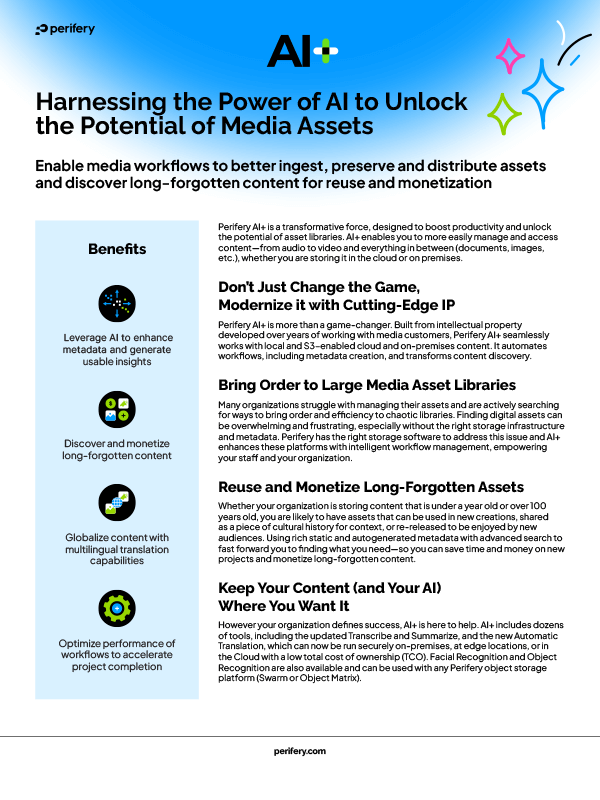
For media organizations, seamless operations and uninterrupted access to content are essential to protect revenue, uphold reputation, and maintain workflow continuity. In an industry where tight schedules and complex production pipelines leave little room for error, even brief downtime can disrupt critical workflows, delay projects, and impact bottom lines. When a disruption occurs, the consequences extend far beyond the immediate downtime.
Timing is Crucial
Every hour of downtime can come with a heavy price tag. For broadcasters and streaming services, even brief disruptions can mean lost advertising revenue and strained partner relationships. This impact is especially pronounced for live broadcasts or time-sensitive releases, like sports events, where delays can lead to forfeited ad revenue and diminished sponsorship opportunities.
In production environments, downtime can disrupt schedules, inflate labor costs, and increase the likelihood of missed deadlines. If disaster strikes or a system fails, your Media Asset Management (MAM) can be affected, preventing teams from accessing critical metadata. And without metadata, assets lose their value—they become difficult to locate, retrieve, and use.
The Cost of Unreliability
Beyond direct financial losses, downtime can also damage your reputation. Reliability is critical in a competitive media landscape, and clients expect uninterrupted access to content. A failure to deliver, whether caused by a system issue, cyberattack, or natural disaster, can undermine trust and future business opportunities.
For example, if a production team misses a delivery date because metadata is unavailable, it risks being seen as an unreliable partner, which can impact future contracts and collaborations. In the media industry, reputation is everything, and the intangible costs of downtime can linger long after workflows are restored.
The Ripple Effect
When a disruption impacts one part of a media workflow, the ripple effect can be significant. Downtime doesn’t just pause immediate tasks; it can create bottlenecks throughout the entire production pipeline. If metadata becomes inaccessible, for example, locating footage can become a slow, manual process. Editors and production teams waste valuable time searching for files, causing delays that can cascade through multiple departments.
A small delay in post-production could impact the release of a film or TV show, pushing back advertising timelines and risking contractual penalties. This highlights the need for continuity solutions that replicate metadata alongside content, ensuring that assets are always available, and workflows can continue with minimal disruption.
A Solution for Seamless Continuity
The hidden risks of downtime highlight the need for a proactive approach to business continuity and disaster recovery (BCDR). Unfortunately, organizations don’t usually consider the devastating effect of downtime until disaster strikes and it’s too late. You're likely familiar with the saying, "fail to prepare, and prepare to fail,” but at Perifery, we want you to take control of the unexpected.
Perifery’s media-focused business continuity solution addresses the challenge of disruption by automatically replicating content, metadata, and workflows to secondary storage sites. Unlike traditional storage systems that rely on lengthy restoration processes, our solution provides instant access to all assets, allowing media teams to resume workflows without interruption. With features like asynchronous replication, multi-site protection, data immutability, and robust security protocols, Perifery delivers a dependable infrastructure that allows you to maintain operations. Seamlessly integrating with existing media environments, it provides a flexible, scalable, and future-proof solution that safeguards assets and metadata for the long term.
